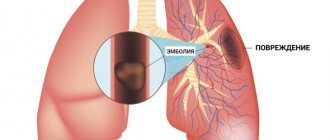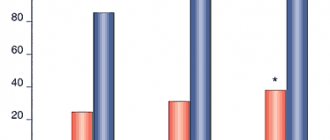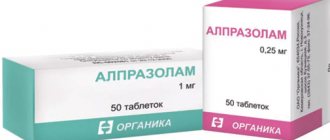Indications
◊ Recommendations of the Russian Ministry of Health
F32 Depressive episode
F33 Recurrent depressive disorder
F40.1 Social phobias
F41.0 Panic disorder (episodic paroxysmal anxiety)
F42.9 Obsessive-compulsive disorder, unspecified
F43.1 Post-traumatic stress disorder
◊ FDA recommendations
- Major depressive disorder
- Premenstrual dysphoric disorder
- Panic disorder
- Post-traumatic stress disorder
- Social phobia
- Obsessive-compulsive disorder (OCD)
- Generalized anxiety disorder (GAD)
◊ Recommendations from UK Medicines and Healthcare Products Regulatory Agency
- Major depressive disorder
- Panic disorder with/without agoraphobia
- OCD in adults and children from 6 years of age
- Social phobia
- Post-traumatic stress disorder
◊ Using Off-label
- Prevention of arterial hypotension during hemodialysis [6]
- Itching [7]
Mechanism of action and pharmacokinetics
Selectively blocks (mainly through serotonin 1A receptors) the reuptake of serotonin by the presynaptic membrane of brain neurons and platelets. With long-term use, it reduces the number of serotonin 5-HT1A and adrenergic receptors in the central nervous system. Sertraline also has some ability to block dopamine reuptake, which may increase dopamine neurotransmission. Sertraline also binds to sigma 1 receptors, which may explain its anti-anxiety effects.
.
- Sertaline is metabolized by several cytochrome P450 (CYP) enzymes: CYP2B6, CYP2C19, CYP2C9, CYP2D6 and CYP3A4, as well as monoamine oxidases and glucuronyltransferases [10]
- Maximum plasma concentration after 4.5-8.4 hours
- Half-life 22-36 hours;
- The half-life of metabolites is 62-104 hours [7].
Treatment regimen
◊ Dosage and dose selection
- Optimal dose: 50-200 mg/day
- Depression and OCD: start with 50 mg and wait a few weeks, but can increase every week to a maximum of 200 mg/day
- Panic disorder, PTSD, social anxiety: start with 25 mg, after a week increase to 50 mg, wait a few weeks to assess whether to increase, maximum 200 mg/day
- Premenstrual dysphoric disorder: 50 mg/day throughout the menstrual cycle or only in the luteal phase
- Itching: 25-100 mg/day [7]
- Prevention of hypotension during hemodialysis: 100 mg/day [6].
- For many patients, a dose of 50 mg/day is not sufficient [1]
- For severe anxiety and agitation, the initial dose should be lower, the titration should be slower, and trazadone or benzodazepine should be added.
- If the patient has a history of intolerance to antidepressants, start with a dose of 12.5 mg
- If anxiety, insomnia, agitation, or akathisia occur at the beginning of treatment or after interruption of treatment, the possibility of bipolar disorder should be considered and switched to a mood stabilizer or an atypical antipsychotic
◊ How quickly it works
- In some patients it begins to work immediately.
- Begins to act after 2-4 weeks.
- If there is no effect after 6-8 weeks, you need to increase the dose or switch to another drug.
- To prevent relapse, it can be taken for many years.
◊ Expected result
- Complete remission.
- After the symptoms of depression disappear, you should continue taking it for 1 year if this was the treatment of the first episode. If this is to treat a recurrent episode, treatment can be extended indefinitely.
- Use in the treatment of anxiety can be indefinite [1].
◊ If it doesn't work
- Change the dose, switch to another medicine or add an auxiliary drug;
- Connect psychotherapy;
- Review the diagnosis by identifying comorbid conditions;
- In patients with undiagnosed bipolar affective disorder, the effectiveness of treatment may be low, in which case it is necessary to switch to a mood stabilizer [1].
- In the acute phase of severe depressive disorder, which is accompanied by psychotic or catatonic symptoms, as well as in patients with current suicidal ideation, electroconvulsive therapy should be considered [4].
◊ How to stop taking it
- Gradually reduce the dose to avoid withdrawal symptoms;
- For many, this scheme works: reduce by 50% in 3 days, then by another 50% in 3 days, then stop;
- If the withdrawal syndrome is very strong, you need to increase the dose and wait until the withdrawal symptoms go away;
- It is important to distinguish withdrawal syndrome from the return of disease symptoms [1].
◊ Treatment combinations
- For insomnia: trazadone
- In the USA, sertraline is combined with bupropion. This combination is called “Well-loft”.
- For fatigue, drowsiness, loss of concentration: modafinil [3].
- Combinations with other antidepressants may activate bipolar disorder and suicidal ideation
- For bipolar depression, psychotic depression, treatment-resistant depression, treatment-resistant anxiety disorder: mood stabilizers, atypical antipsychotics
- For anxiety disorder: gabapentin, tiagabine
- Benzodiazepines
Seralin (sertraline) in the treatment of depressive conditions
The prevalence of depressive disorders, the variability of their structure, combination with other neurotic or psychotic disorders, connection with personal attitudes, somatic and social factors give rise to a large number of clinical forms of depression and, therefore, require the use of a variety of therapeutic agents.
Affective disorders occur in every fifth person during their lifetime. The risk of developing depression reaches a level of 20%, 1% of cases are initially diagnosed annually, in 55% of people depression recurs, and in 12–15% it becomes chronic. More than 60% of patients with depression do not come to the attention of psychiatrists, since atypical clinical forms predominate in the morbidity structure.
Only 10–15% of patients with depression receive treatment, and only 0.1% of patients are admitted to psychiatric hospitals. According to WHO estimates, major depression currently ranks 4th among the leading causes of decreased life expectancy, taking into account decreased ability to work.
30–40% of patients with depression remain resistant to adequate thymoanaleptic therapy. In this case, resistance to the first drug reaches 40–60%.
Modern requirements for an antidepressant, along with a fairly effective thymoanaleptic effect, include good tolerability and a favorable side effect profile, as well as the absence of “behavioral toxicity”.
In this regard, there is a constant search for drugs that would optimally combine both high thymoanaleptic efficacy and a sufficient degree of safety.
The most widely used in global psychiatric and general medical practice are antidepressants from the group of selective serotonin reuptake inhibitors (SSRIs). Their therapeutic effect is associated with inhibition of serotonin reuptake in both the central nervous system and the peripheral nervous system. At the next stage, the blocking function of serotonin IA receptors located in the somatodendritic part of the neurons in the midbrain raphe region is disrupted. At the same time, the side effects of the drug that arise at the 1st stage are mitigated, and signs of therapeutic antidepressant effects appear. Serotonin neurons are disinhibited (disinhibited), and serotonin begins to be rapidly released from axons leading to various brain structures. SSRI drugs do not have pronounced “behavioral toxicity”, anticholinergic side effects, adverse hepato- and cardiotropic effects and teratogenicity. They are easy to use because they have a prolonged effect up to a day, can be used without titrating doses, and do not cause dependence or withdrawal symptoms.
This group of drugs includes sertraline (Zoloft, Seraline). However, it has its own specific features that determine its relevance in clinical practice.
Firstly, this is a balanced drug that does not aggravate anxiety and emotional tension, which makes it possible to expand the scope of its use.
Secondly, it can be classified as a second generation SSRI, since its structure has changed the geometry of the antidepressant at the molecular level, as a result of which it was possible to achieve a more “accurate” interaction with the receptor. Thus, when comparing the S- and R-enantiomers, it turned out that the S-enantiomer of the active substance is 30 times more potent an inhibitor of serotonin reuptake than its optical antipode.
Thirdly, sertraline is one of the few antidepressants approved for use in pediatric practice, which, apparently, may indicate the level of its safety.
Fourthly, this drug has proven itself in the treatment of depression with comorbid mental disorders, which expands the range of its use both in psychiatry and in general medical practice: chronic pain syndrome, bulimia, obesity, alcoholism, obsessive-compulsive disorder, attention deficit disorder with hyperactivity, panic disorders, etc.
Side effects of the drug are associated with hyperstimulation of the serotonin system: gastrointestinal disorders, loss of appetite, dizziness, nausea, diarrhea, hyperreflexia.
Sertraline hydrochloride is a drug with a bicyclic structure, a naphthylamine derivative. It is a powerful selective inhibitor of serotonin reuptake and does not cause blockade of muscarinic, serotonin, adrenergic and GABAergic receptors. The drug has virtually no anticholinergic, cardiotoxic or sedative properties. The basis of its action profile is a distinct thymoleptic effect with a weak stimulating component. By relieving depressive symptoms, the drug also successfully affects the parameters of the immune, neurotransmitter and hormonal systems.
A number of works by modern authors are devoted to the clinical evaluation of the use of sertraline for relieving depression in patients [1, 2, 3, 4, 5, 6, 7, 8, 9].
Our study had the following goals: to confirm the antidepressant activity of the drug Seralin; determine the effectiveness of the drug depending on the complexity and depth of the structure of depressive disorders; to clarify the spectrum of psychotropic activity of the drug, to identify existing side effects.
The study involved 40 patients (14 men, 26 women), whose clinical picture revealed depressive states within the framework of a single or recurrent depressive episode (F-33.1; F-33.2), bipolar affective disorder (F-31, 3; F-31.4), cyclothymia with comorbid anxiety-phobic personality disorders (F-60.1; F-60.3).
The selection criteria were: leading mental disorder - depressive syndrome; relative monomorphism of the disorder.
Exclusion criteria: childhood and old age; severe somatoneurological pathology; severity of schizophrenic defect; Substance abuse.
The age of patients is from 20 to 61 years. The duration of the disease is from 1 week to 18 years. The mental state of the patients at the start of therapy was determined by depressive symptoms of varying depth and structure.
The patients were diagnosed with the following syndromes: typical classical depression; anxious depression; apathetic depression; obsessive-phobic syndrome; depressive-delusional syndrome.
Comorbid anxiety-phobic disorders were represented by panic attacks in 21 patients, generalized anxiety-type manifestations in 14, and obsessive-compulsive disorders in 5 patients. The duration of treatment was 6 weeks. The initial daily dose was determined individually (50 or 100 mg/day). The maximum dose is up to 150 mg/day. The drug was prescribed orally in the first half of the day, along with food; Combinations with other antidepressants were avoided whenever possible. However, the peculiarities of the mental state of the patients dictated the need to prescribe sedative or hypnotic drugs. Therefore, we used clonazepam, phenazepam and small doses of antipsychotics: sonapax, chlorprotexen. During the observation process, 5 patients dropped out of the study for various reasons: 2 of them were discharged from the hospital for family reasons due to some improvement in their condition; in 2 clinical cases there was a transition to another phase (inversion of affect).
One patient noted a feeling of nausea, mild diarrhea, increased heartburn, and decreased appetite.
The therapeutic effect of seraline was determined by the degree of reduction in the total Hamilton Rating Scale (HDRS) score for assessing depressive symptoms at different periods of treatment. The total score was recorded during five visits: H0 - upon inclusion in the study; H1 - 1 week after starting the drug; H2 - after 2 weeks; H3 - after 4 weeks; H6 - after 6 weeks after starting to take seralin.
The criterion for the effectiveness of therapy was a 50% reduction of symptoms according to HDRS. Additional assessment of the effectiveness of therapeutic interventions was based on the CGI Clinical Global Impression scale. All patients were examined daily by a doctor. The dynamics of the condition were reflected in extended diaries using rating scales and the results of paraclinical studies.
When analyzing the results of the study, attention is drawn to the dynamism and relative harmony of the reduction of depressive symptoms, the absence of a period of hyperstimulation, increased anxiety, agitation, and activation of suicidal tendencies. This is especially important for patients with depression with obsessive-phobic disorders in the form of panic attacks, since their initial level of anxiety at the beginning of therapy significantly exceeded the level of anxiety in other patients. At the 1st stage of treatment, the actualization of anxious fears decreases, a calmer attitude towards phobias is formed, hypochondriacal manifestations fade, by the end of the 2nd week, the manifestation of anxiety and somatization in patients decreases, the level of anxiety harmoniously decreases and mood improves.
Obsessive-phobic symptoms cease to dominate consciousness, manifestations of avoidant behavior soften, obsessions and phobias cease to be painfully painful, and their significance decreases. At the 4th week of therapy, patients begin to have plans for the future, interest in cognitive and work activities awakens, they move more easily, communicate and gradually return to their usual way of life. Patients develop a positive attitude towards the drug and an understanding of the need for long-term maintenance therapy.
Dynamics in the form of a dissociated version of the reduction of symptoms was observed in those clinical cases when in the structure of the depressive syndrome the predominant affect was melancholy or apathy, and comorbid symptoms were represented by a generalized anxiety state or “depressive alienation” of mental functions (apathy, anhedonia, absession in the form of influxes of painful reasoning, without a pronounced somato-vegetative component, adynamia, etc.). At the 1st stage of the study, anxiety and the relevance of painful experiences decreased, and at the 2nd stage, mood improved and vital activity appeared.
At the time of completion of the study, the results of therapy showed that 22 patients had “marked improvement” (CGI scale), 11 had “moderate improvement”, 4 patients had “minor improvement”, 2 had “uncertain antidepressant effect” ( short-term improvement, without stabilization of the condition) and in 1 - no change.
The pronounced thymoleptic activity of the drug is confirmed by the dynamics of HDRS depression scale indicators: a pronounced therapeutic effect (a decrease in indicators by more than 50%) was registered during the transition from the 3rd to the 4th week of the study. By the time of completion of therapy, a decrease in the average HDRS score by 34% from baseline was noted.
In all patients, the stimulating effect appeared in the 4th week of therapy.
During the study, side effects were identified in 5 patients. On the 3rd day, 1 patient developed anxiety and an agitated state, which was apparently due to the insufficiently formed anxiolytic effect of the drug. In three clinical cases, transient symptoms of nausea were observed. One patient experienced short-term urinary retention, which resolved without drug discontinuation or dose reduction. The side effects described in the literature (L. Ziplinski et al., 1989; H. Gommans, 1990) were not recorded in our study.
Analyzing clinical observations, the following conclusions can be drawn.
- The drug seraline (sertraline) has a pronounced thymoleptic effect.
- The profile of the therapeutic activity of the antidepressant seraline consists of a harmonious, consistently developing anxiolytic, thymoleptic and stimulating effects.
- Seralin can serve as a drug of choice in the treatment of depression with a predominance of anxious affect, especially with comorbid obsessive-phobic disorders.
- The unique therapeutic profile of the drug makes it possible to avoid an increase in suicidal risk in the early stages of treatment for depression.
- The drug Seralin is well tolerated, side effects are minor, quickly relieved and do not interfere with therapy.
- The antidepressant seraline (sertraline) is characterized by a balanced therapeutic effect with successive anxiolytic, thymoleptic and weak stimulating effects.
For questions regarding literature, please contact the editor.
B. A. Tashmatov , Doctor of Medical Sciences, Professor N. S. Bulycheva, Associate Professor 1st Tashkent State Medical Institute , Tashkent
* The drug is registered in Ukraine, Kazakhstan, Uzbekistan and a number of other CIS countries; in Russia it is undergoing the registration stage.
Special patient groups
◊ Patients with kidney problems
No special dose selection is required [1].
◊ Patients with liver disease
Reduce doses or take half as often [1].
◊ Patients with heart disease
Useful in the recovery of depressed patients after a heart attack.
◊ Elderly patients
Some people do better at low doses.
◊ Children and teenagers
- It is necessary to regularly and personally check the patient's condition, especially in the first weeks of treatment.
- Inform adults about the risks.
- Approved for the treatment of OCD
- Ages 6-12: Initial dose 25 mg/day
- From 13 years old – adult doses [1].
◊ Pregnant women
- Not recommended for pregnant women, especially in the first trimester [9]
- All risks should be weighed and compared
- Bleeding can be expected during childbirth
◊ Breastfeeding
- The medicine passes into breast milk.
- If the infant shows signs of irritation or sedation, discontinue feeding or sertraline
- However, treatment after childbirth may be necessary, so the risks should be weighed.
- Sertraline has proven effective in treating postpartum depression
- Sertraline is the most studied antidepressant used in breastfeeding women. It is the preferred antidepressant during lactation [8].
Overdose
Symptoms:
no severe symptoms were detected in case of an overdose of sertraline even when using the drug in high doses. However, when administered simultaneously with other drugs or alcohol, severe poisoning can occur, including coma and death.
In case of overdose, manifestations of serotonin syndrome are possible (nausea, vomiting, drowsiness, tachycardia, agitation, dizziness, psychomotor agitation, diarrhea, increased sweating, myoclonus and hyperreflexia).
Treatment:
There are no specific antidotes. Intensive supportive care and constant monitoring of vital body functions are required. Inducing vomiting is not recommended. The administration of activated carbon may be more effective than gastric lavage. The airway must be maintained. Sertraline has a large Vd, and therefore increased diuresis, dialysis, hemoperfusion or blood transfusion may be ineffective.
Interaction with other substances
- Tramadol increases the risk of seizures
- Cannot be used with MAO inhibitors. After stopping taking MAO inhibitors, 14 days should pass. Start treatment with MAO inhibitors 7 days after stopping citalopram.
- Together with anticoagulants, probably increases the risk of bleeding.
- Urine tests for benzodiazepines may give false-positive results in those taking sertraline.
- Due to CYP450 2D6 inhibition, sertraline may increase thioridazine levels and cause arrhythmia
- Due to inhibition of CYP450 3A4, sertraline may increase the levels of alprozalam, buspirone and triazolam
- By inhibiting CYP450 3A4, sertraline may theoretically increase concentrations of certain cholesterol-lowering HMG-CoA reductase inhibitors, particularly simvastatin, atorvastatin, and lovastatin, but not pravastatin or fluvastatin, which would increase the risk of rhabdomyolysis. Therefore, coadministration of sertraline with certain HMG CoA reductase inhibitors should be done with caution.
Side effects and other risks
◊ Mechanism of side effects
- Side effects are caused by an increase in serotonin. Most side effects occur immediately after starting treatment and go away over time, while the therapeutic effects increase over time.
- Sertraline may interfere with dopamine reuptake, which may lead to agitation and anxiety early in treatment. On the other hand, increased serotonin levels may cause decreased dopamine release and may contribute to cognitive decline and apathy in some patients.
◊ Side effects
- Gastroenterological (reduced appetite, nausea, diarrhea, constipation)
- Insomnia, sedation, agitation, tremor, headache
- Sweating Rare hyponatremia in the elderly (resolves after discontinuation of sertraline) [1]
- Dangerous side effects: seizures, mania, suicidal ideation
- Weight gain: rare
- Sedation: rarely
- Sexual dysfunction: yes (dose-dependent effect)
◊ What to do about side effects
- Wait;
- If sertraline activates, take in the morning;
- Reduce dose to 25 mg or 12.5 mg, when side effects go away, increase dose;
- If side effects do not go away, change the drug [1]
◊ Long-term use
Safely
◊Addiction
No.
◊ Overdose
- Very rare cases of fatal overdoses. Fatalities are associated with the combination of sertraline with alcohol and drugs.
- Vomiting, sedation, cardiac arrhythmia.
Side effects
From the digestive system:
dyspeptic symptoms (flatulence, nausea, vomiting, diarrhea, constipation), abdominal pain, pancreatitis, dry mouth, hepatitis, jaundice, liver failure, decreased appetite (rarely increased), even anorexia; rarely, with long-term use - an asymptomatic increase in transaminase activity in the blood serum occurs. Discontinuation of the drug in this case leads to normalization of enzyme activity.
From the cardiovascular system:
palpitations, tachycardia, arterial hypertension.
From the musculoskeletal system:
arthralgia, muscle cramps.
From the central nervous system and peripheral nervous system:
extrapyramidal disorders (dyskinesia, akathisia, teeth grinding, gait disturbance), involuntary muscle contractions, paresthesia, fainting, drowsiness, headache, migraine, dizziness, tremor, insomnia, anxiety, agitation, hypomania, mania, hallucinations, euphoria, nightmares, psychosis, decreased libido, suicide, coma.
From the respiratory system:
bronchospasm, yawning.
From the urinary system:
enuresis, incontinence or urinary retention.
From the reproductive system:
sexual dysfunction (delayed ejaculation, decreased potency), galactorrhea, gynecomastia, menstrual irregularities, priapism.
From the senses:
blurred vision, mydriasis, ringing in the ears.
From the endocrine system:
hyperprolactinemia, hypothyroidism, syndrome of inappropriate ADH secretion.
Dermatological reactions:
redness of the skin or flushing of the face, alopecia, photosensitivity reaction, purpura, increased sweating.
Allergic reactions:
urticaria, pruritus, anaphylactoid reaction, angioedema, periorbital edema, facial edema, rarely Stevens-Johnson syndrome and epidermal necrolysis.
From the hematopoietic system:
possible development of leukopenia and thrombocytopenia.
Other:
weight loss or gain, peripheral edema, increased serum cholesterol levels, weakness, bleeding (including nasal, gastrointestinal or hematuria). Rare cases of withdrawal syndrome have been described when stopping treatment with sertraline. Paresthesia, hypoesthesia, symptoms of depression, hallucinations, aggressive reactions, psychomotor agitation, anxiety, or symptoms of psychosis may appear that cannot be distinguished from the symptoms of the underlying disease.
Expert advice
- An antidepressant with the best proven cardiac safety.
- Compared to some other antidepressants, it is more likely to cause gastroenterological side effects (diarrhea) [1].
- Sertraline shows effectiveness in the treatment of depression in patients with vascular cognitive impairment [5].
- May be a more effective treatment for women with PTSD or depression than for men with PTSD or depression, but clinical significance is unknown
- SSRIs may be less effective in women over 50, especially if they are not taking estrogen
- Some evidence suggests that treatment with sertraline only during the luteal phase may be more effective than continuous treatment in patients with PMDD.
- In combination with olanzapine, sertraline has been shown to be effective in the treatment of psychotic depression [10]. It is important to consider that sertraline increases the clearance of olanzapine by 30%. Moreover, this effect is difficult to explain by the interaction of drugs at the level of cytochromes. This may be related to P-glycoprotein.
- The fact that sertraline can be metabolized through multiple pathways is clinically useful: it is less susceptible to drug interactions than antidepressants that rely on only one enzyme or pathway as their primary metabolic pathway.
- An additional advantage of sertraline over some other SSRIs (especially fluoxetine, paroxetine and fluvoxamine) is that it is not a strong inhibitor of any specific CYP enzyme [10].
Overdose of the drug Sertraline, symptoms and treatment
Possible death if the dose of sertraline is exceeded in combination with other drugs and/or alcohol. There is no specific antidote for sertraline. It is advisable to rinse the stomach, prescribe enterosorbents, monitor vital functions, ensure airway patency and adequate ventilation, and provide symptomatic and supportive therapy. Given the large volume of distribution of sertraline, forced diuresis, dialysis, hemoperfusion and exchange transfusion are ineffective.
List of pharmacies where you can buy Sertraline:
- Moscow
- Saint Petersburg







